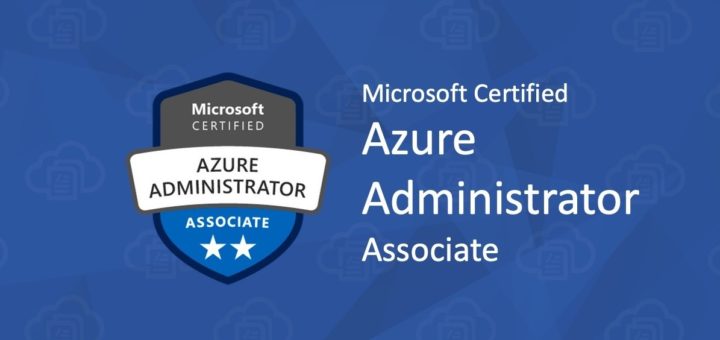Question #101
A Solutions Architect needs to use AWS to implement pilot light disaster recovery for a three-tier web application hosted in an on-premises datacenter.
Which solution allows rapid provision of working, fully-scaled production environment?
- A. Continuously replicate the production database server to Amazon RDS. Use AWS CloudFormation to deploy the application and any additional servers if necessary.
- B. Continuously replicate the production database server to Amazon RDS. Create one application load balancer and register on-premises servers. Configure ELB Application Load Balancer to automatically deploy Amazon EC2 instances for application and additional servers if the on-premises application is down.
- C. Use a scheduled Lambda function to replicate the production database to AWS. Use Amazon Route 53 health checks to deploy the application automatically to Amazon S3 if production is unhealthy.
- D. Use a scheduled Lambda function to replicate the production database to AWS. Register on-premises servers to an Auto Scaling group and deploy the application and additional servers if production is unavailable.
Correct Answer: A
Question #102
A Solutions Architect notices slower response times from an application. The CloudWatch metrics on the MySQL RDS indicate Read IOPS are high and fluctuate significantly when the database is under load.
How should the database environment be re-designed to resolve the IOPS fluctuation?
- A. Change the RDS instance type to get more RAM.
- B. Change the storage type to Provisioned IOPS.
- C. Scale the web server tier horizontally.
- D. Split the DB layer into separate RDS instances.
Correct Answer:B
Question #103
A Solutions Architect is designing a solution that can monitor memory and disk space utilization of all Amazon EC2 instances running Amazon Linux and
Windows.
Which solution meets this requirement?
- A. Default Amazon CloudWatch metrics.
- B. Custom Amazon CloudWatch metrics.
- C. Amazon Inspector resource monitoring.
- D. Default monitoring of Amazon EC2 instances.
Correct Answer: B
Reference –
https://docs.aws.amazon.com/AWSEC2/latest/UserGuide/monitoring_ec2.html
Question #104
A Solutions Architect is creating a new relational database. The Compliance team will use the database, and mandates that data content must be stored across three different Availability Zones.
Which of the following options should the Architect Use?
- A. Amazon Aurora
- B. Amazon RDS MySQL with Multi-AZ enabled
- C. Amazon DynamoDB
- D. Amazon ElastiCache
Correct Answer: A
Question #105
A company needs to quickly ensure that all files created in an Amazon S3 bucket in us-east-1 are also available in another bucket in ap-southeast-2.
Which option represents the SIMPLIEST way to implement this design?
- A. Add an S3 lifecycle rule to move any files from the bucket in us-east-1 to the bucket in ap-southeast-2.
- B. Create a Lambda function to be triggered for every new file in us-east-1 that copies the file to the bucket in ap-southeast-2.
- C. Use SNS to notify the bucket in ap-southeast-2 to create a file whenever the file is created in the bucket in us-east-1.
- D. Enable versioning and configure cross-region replication from the bucket in us-east-1 to the bucket in ap-southeast-2.
Correct Answer:D
Question #106
An organization has a long-running image processing application that runs on Spot Instances that will be terminated when interrupted. A highly available workload must be designed to respond to Spot Instance interruption notices. The solution must include a two-minute warning when there is not enough capacity.
How can these requirements be met?
- A. Use Amazon CloudWatch Events to invoke an AWS Lambda function that can launch On-Demand Instances.
- B. Regularly store data from the application on Amazon DynamoDB. Increase the maximum number of instances in the AWS Auto Scaling group.
- C. Manually place a bid for additional Spot Instances at a higher price in the same AWS Region and Availability Zone.
- D. Ensure that the Amazon Machine Image associated with the application has the latest configurations for the launch configuration.
Correct Answer: A
Question #107
A company has an Amazon RDS-managed online transaction processing system that has very heavy read and write. The Solutions Architect notices throughput issues with the system.
How can the responsiveness of the primary database be improved?
- A. Use asynchronous replication for standby to maximize throughput during peak demand.
- B. Offload SELECT queries that can tolerate stale data to READ replica.
- C. Offload SELECT and UPDATE queries to READ replica.
- D. Offload SELECT query that needs the most current data to READ replica.
Correct Answer: B
Reference –
https://aws.amazon.com/rds/faqs/
Question #108
A company is designing a failover strategy in Amazon Route 53 for its resources between two AWS Regions. The company must have the ability to route a user’s traffic to the region with least latency, and if both regions are healthy, Route 53 should route traffic to resources in both regions.
Which strategy should the Solutions Architect recommend?
- A. Configure active-active failover using Route 53 latency DNS records.
- B. Configure active-passive failover using Route 53 latency DNS records.
- C. Configure active-active failover using Route 53 failover DNS records.
- D. Configure active-passive failover using Route 53 failover DNS records.
Correct Answer:A
Question #109
A company is developing several critical long-running applications hosted on Docker.
How should a Solutions Architect design a solution to meet the scalability and orchestration requirements on AWS?
- A. Use Amazon ECS and Service Auto Scaling.
- B. Use Spot Instances for orchestration and for scaling containers on existing Amazon EC2 instances.
- C. Use AWS OpsWorks to launch containers in new Amazon EC2 instances.
- D. Use Auto Scaling groups to launch containers on existing Amazon EC2 instances.
Correct Answer:A
Reference –
https://aws.amazon.com/getting-started/tutorials/deploy-docker-containers/
Question #110
A Solutions Architect is developing a new web application on AWS. The Architect expects the application to become very popular, so the application must scale to support the load. The Architect wants to focus on software development and deploying new features without provisioning or managing instances.
What solution is appropriate?
- A. Amazon API Gateway and AWS Lambda
- B. Elastic Load Balancing with Auto Scaling groups and Amazon EC2
- C. Amazon API Gateway and Amazon EC2
- D. Amazon CloudFront and AWS Lambda
Correct Answer: A
Question #111
A Solutions Architect is deploying a new production MySQL database on AWS. It is critical that the database is highly available.
What should the Architect do to achieve this goal with Amazon RDS?
- A. Create a read replica of the primary database and deploy it in a different AWS Region.
- B. Enable multi-AZ to create a standby database in a different Availability Zone.
- C. Enable multi-AZ to create a standby database in a different AWS Region.
- D. Create a read replica of the primary database and deploy it in a different Availability Zone.
Correct Answer: B
Question #112
An organization designs a mobile application for their customers to upload photos to a site. The application needs a secure login with MFA. The organization wants to limit the initial build time and maintenance of thB solution.
Which solution should a Solutions Architect recommend to meet the requirements?
- A. Use Amazon Cognito Identity with SMS-based MFA.
- B. Edit AWS IAM policies to require MFA for all users.
- C. Federate IAM against corporate AD that requires MFA.
- D. Use Amazon API Gateway and require SSE for photos.
Correct Answer:A
Question #113
A Solutions Architect is designing a solution to monitor weather changes by the minute. The frontend application is hosted on Amazon EC2 instances. The backend must be scalable to a virtually unlimited size, and data retrieval must occur with minimal latency.
Which AWS service should the Architect use to store the data and achieve these requirements?
- A. Amazon S3
- B. Amazon DynamoDB
- C. Amazon RDS
- D. Amazon EBS
Correct Answer: B
Question #114
A company hosts a website on premises. The website has a mix of static and dynamic content, but users experience latency when loading static files.
Which AWS service can help reduce latency?
- A. Amazon CloudFront with on-premises servers as the origin
- B. ELB Application Load Balancer
- C. Amazon Route 53 latency-based routing
- D. Amazon EFS to store and server static files
Correct Answer:A
Question #115
A company wants to analyze all of its sales information aggregated over the last 12 months. The company expects there to be over 10TB of data from multiple sources.
What service should be used?
- A. Amazon DynamoDB
- B. Amazon Aurora MySQL
- C. Amazon RDS MySQL
- D. Amazon Redshift
Correct Answer:D
Question #116
A media company has deployed a multi-tier architecture on AWS. Web servers are deployed in two Availability Zones using an Auto Scaling group with a default
Auto Scaling termination policy. The web servers’ Auto Scaling group currently has 15 instances running.
Which instance will be terminated first during a scale-in operation?
- A. The instance with the oldest launch configuration.
- B. The instance in the Availability Zone that has most instances.
- C. The instance closest to the next billing hour.
- D. The oldest instance in the group.
Correct Answer: B
Question #117
A retail company has sensors placed in its physical retail stores. The sensors send messages over HTTP when customers interact with in-store product displays.
A Solutions Architect needs to implement a system for processing those sensor messages; the results must be available for the Data Analysis team.
Which architecture should be used to meet these requirements?
- A. Implement an Amazon API Gateway to server as the HTTP endpoint. Have the API Gateway trigger an AWS Lambda function to process the messages, and save the results to an Amazon DynamoDB table.
- B. Create an Amazon EC2 instance to server as the HTTP endpoint and to process the messages. Save the results to Amazon S3 for the Data Analysis team to download.
- C. Use Amazon Route 53 to direct incoming sensor messages to a Lambda function to process the message and save the results to a Amazon DynamoDB table.
- D. Use AWS Direct Connect to connect sensors to DynamoDB so that data can be written directly to a DynamoDB table where it can be accessed by the Data Analysis team.
Correct Answer:A
Question #118
A client is migrating a legacy web application to the AWS Cloud. The current system uses an Oracle database as a relational database management system solution. Backups occur every night, and the data is stored on-premises. The Solutions Architect must automate the backups and identity a storage solution while keeping costs low.
Which AWS service will meet these requirements?
- A. Amazon RDS
- B. Amazon RedShift
- C. Amazon DynamoDB Accelerator
- D. Amazon ElastiCache
Correct Answer:A
Question #119
A company has an Amazon RDS database backing its production website. The Sales team needs to run queries against the database to track training program effectiveness. Queries against the production database cannot impact performance, and the solution must be easy to maintain.
How can these requirements be met?
- A. Use an Amazon Redshift database. Copy the product database into Redshift and allow the team to query it.
- B. Use an Amazon RDS read replica of the production database and allow the team to query against it.
- C. Use multiple Amazon EC2 instances running replicas of the production database, placed behind a load balancer.
- D. Use an Amazon DynamoDB table to store a copy of the data.
Correct Answer: B
Question #120
A company must collect temperature data from thousands of remote weather devices. The company must also store this data in a data warehouse to run aggregations and visualizations.
Which services will meet these requirements? (Choose two.)
- A. Amazon Kinesis Data Firehouse
- B. Amazon SQS
- C. Amazon Redshift
- D. Amazon SNS
- E. Amazon DynamoDB
Correct Answer:AB



